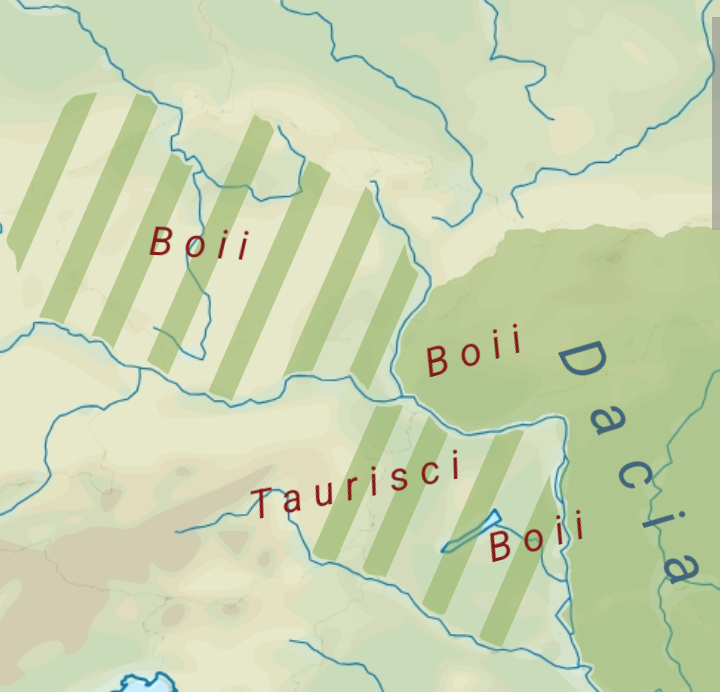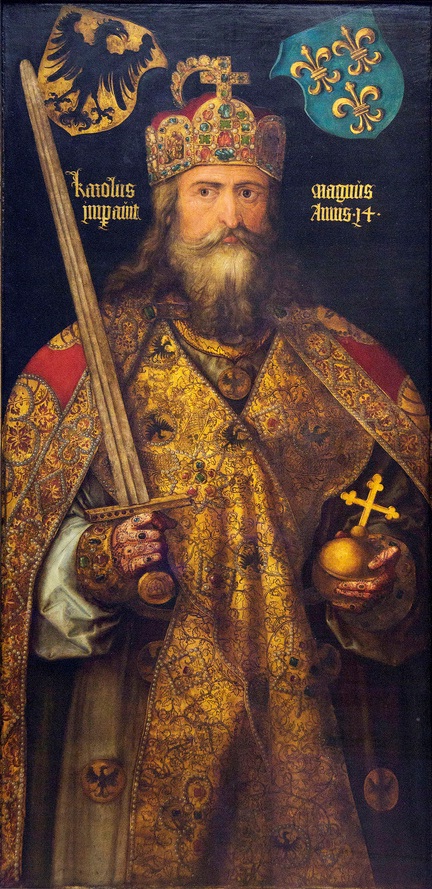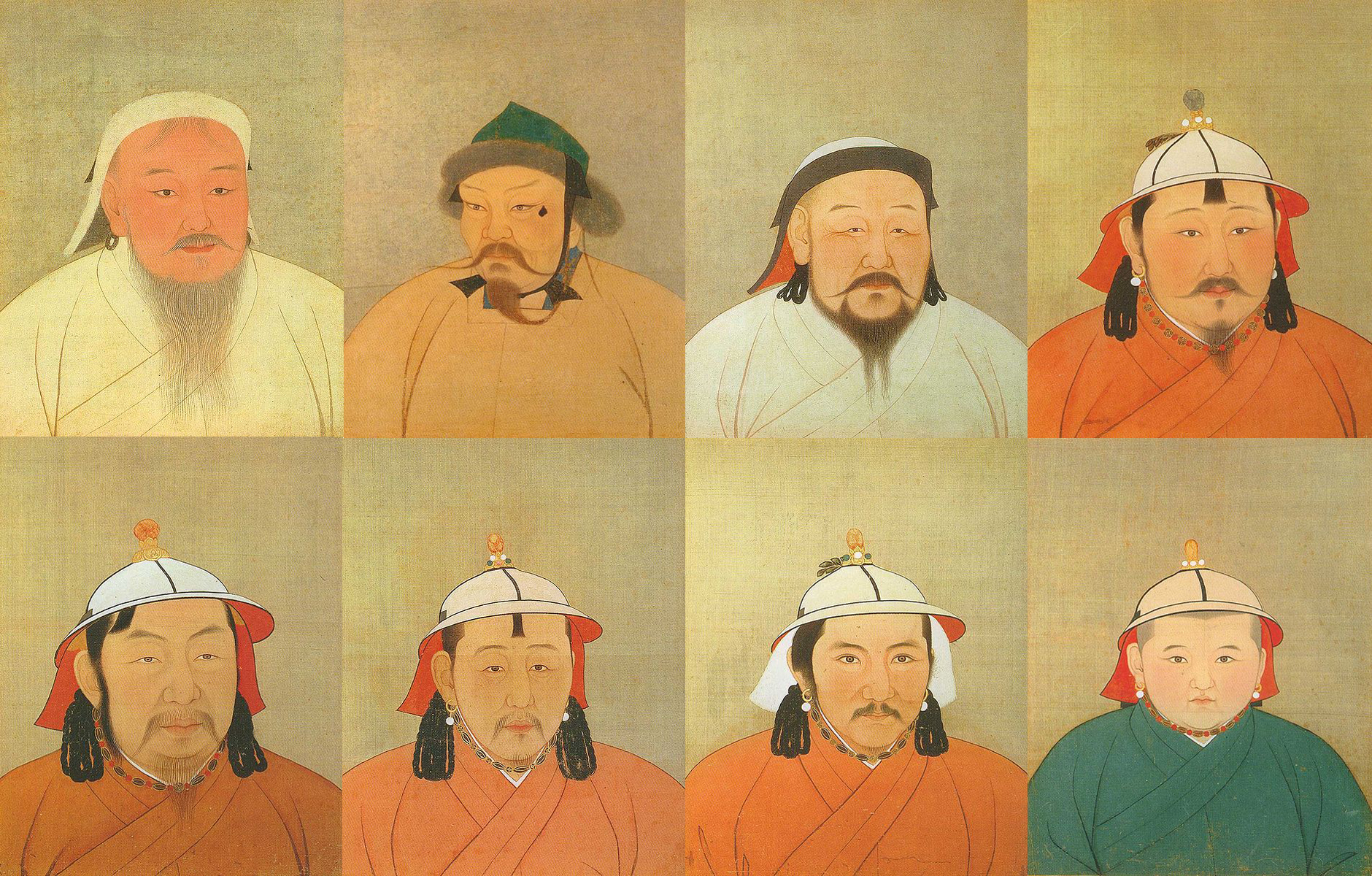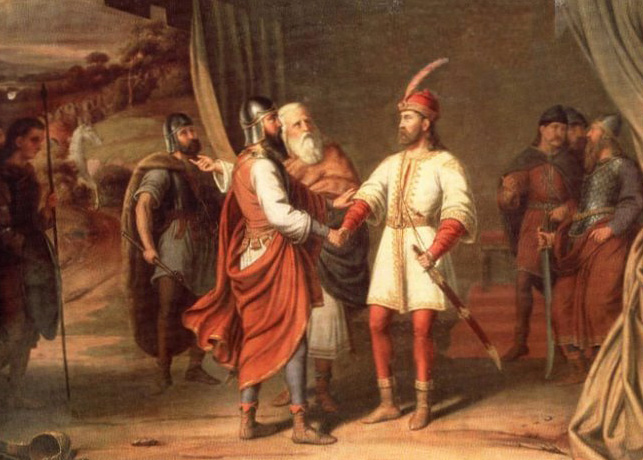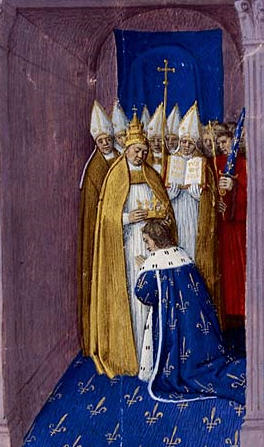|
Eric Of Friuli
Eric (also ''Heirichus'' or ''Ehericus''; died 799) was the Duke of Friuli (''dux Foroiulensis'') from 789 to his death. He was the eldest son of Gerold of Anglachgau and by the marriage of his sister Hildegard the brother-in-law of Charlemagne. Background An elegy composed by Paulinus II, Patriarch of Aquileia on the occasion of the death of his friend Eric, reveals that Eric had been born at "''urbs dives Argentea''", a Latin name of Frankish Strasbourg."''Versus Paulini de Herico duce,''" in ''L'Oeuvre Poétique de Paulin D'Aquilée.'' Edited by Dag Norberg (Stockholm: Almquist and Wiskell International, 1979), 100. The elegy and another work of Paulinus called the ''Liber Exhortationis,'' a work which draws from the Bible and certain Fathers of the Church to offer instruction on how to live a morally upright Christian life while carrying out secular duties, indicates that Eric was a pious Catholic. Eric was appointed to the Carolingian Duchy of Friuli in 789, about two years ... [...More Info...] [...Related Items...] OR: [Wikipedia] [Google] [Baidu] |
Duke Of Friuli
The dukes and margraves of Friuli were the rulers of the Duchy of Friuli, Duchy and March of Friuli in the Middle Ages. The dates given below, when contentious, are discussed in the articles of the respective dukes. Lombard dukes * 568–c.584 Gisulf I of Friuli, Gisulf I, nephew of King Alboin * 568/c.584–590 Grasulf I of Friuli, Grasulf I brother of GisulfGoubert, Paul. ''Byzance avant l'Islam II 1: Byzance et les Francs'' (Paris 1956) p. 197 * 590–610 Gisulf II of Friuli, Gisulf II, son of Grasulf I * 610–617 Tasso of Friuli, Tasso, son of Gisulf II * 610–617 Kakko of Friuli, Kakko, brother of Tasso * 617–651 Grasulf II of Friuli, Grasulf II, brother of Gisulf II * 651–663 Ago of Friuli, Ago * 663–666 Lupus of Friuli, Lupus * 666 Arnefrit of Friuli, Arnefrid, son of Lupus * 666–678 Wechtar of Friuli, Wechtar * 678–??? Landar of Friuli, Landar * ???–694 Rodoald of Friuli, Rodoald * 694 Ansfrid of Friuli, Ansfrid * ... [...More Info...] [...Related Items...] OR: [Wikipedia] [Google] [Baidu] |
Pannonia
Pannonia (, ) was a Roman province, province of the Roman Empire bounded on the north and east by the Danube, on the west by Noricum and upper Roman Italy, Italy, and on the southward by Dalmatia (Roman province), Dalmatia and upper Moesia. It included the modern regions western Hungary, western Slovakia, eastern Austria, northern Croatia, north-western Serbia, northern Slovenia, and northern Bosnia and Herzegovina. Background In the Early Iron Age, Transdanubia was inhabited by the Pannonians or Pannonii, a collection of Illyrians, Illyrian tribes. The Celts invaded in the Late Iron Age and Gallo-Roman culture, Gallo-Roman historian Pompeius Trogus writes that the Celts were met with heavy resistance from the locals and were not able to overrun the southern part of Transdanubia. Some tribes advanced as far as Delphi, with the Scordisci settling in Syrmia (279 BC) upon being forced to withdraw. The arrival of the Celts in Transdanubia disrupted the flow of amber from the Balti ... [...More Info...] [...Related Items...] OR: [Wikipedia] [Google] [Baidu] |
Siege Of Trsat
The siege of Trsat () was a battle fought over possession of the town of Trsat ()The city of Tarsatica, where the siege happened, was probably located at the present Old Town in Rijeka, not at Trsat itself, which is found on a hill overlooking Rijeka on the other side of the Rječina River. Trsat was actually founded by the Tarsatica's surviving inhabitants, a year after the siege. (Croatian Academy of America. ''Journal of Croatian studies'' (1986), Vol. 27–30) in Liburnia, near the Croatian–Frankish border.Scholz 1970, p. 191 The battle was fought in the autumn of 799 between the defending forces of Dalmatian Croatia under the leadership of Croatian duke Višeslav, and the invading Frankish army of the Carolingian Empire led by Eric of Friuli. The battle was a Croatian victory, and the Frankish commander Eric was killed during the siege.Žic 2001, p. 18 The Frankish invasion of Croatia, the destruction of Tarsatica, the coronation of Charlemagne as Holy Roman Emperor, and ... [...More Info...] [...Related Items...] OR: [Wikipedia] [Google] [Baidu] |
Slavs
The Slavs or Slavic people are groups of people who speak Slavic languages. Slavs are geographically distributed throughout the northern parts of Eurasia; they predominantly inhabit Central Europe, Eastern Europe, Southeastern Europe, and Northern Asia, though there is a large Slavic minority scattered across the Baltic states and Central Asia, and a substantial Slavic diaspora in the Americas, Western Europe, and Northern Europe. Early Slavs lived during the Migration Period and the Early Middle Ages (approximately from the 5th to the 10th century AD), and came to control large parts of Central, Eastern, and Southeast Europe between the sixth and seventh centuries. Beginning in the 7th century, they were gradually Christianized. By the 12th century, they formed the core population of a number of medieval Christian states: East Slavs in the Kievan Rus', South Slavs in the Bulgarian Empire, the Principality of Serbia, the Duchy of Croatia and the Banate of B ... [...More Info...] [...Related Items...] OR: [Wikipedia] [Google] [Baidu] |
Liburnia
Liburnia () in ancient geography was the land of the Liburnians, a region along the northeastern Adriatic coast in Europe, in modern Croatia, whose borders shifted according to the extent of the Liburnian dominance at a given time between 11th and 1st century BC. Domination of the Liburnian thalassocracy in the Adriatic Sea was confirmed by several Antique writers, but the archeologists have defined a region of their material culture to be more precisely in northern Dalmatia, eastern Istria, and Kvarner. Classical Liburnia The Liburnian cultural group developed at the end of the Bronze Age after the Balkan-Pannonian migrations, and during the Iron Age in a region bordered by Raša, Zrmanja and Krka rivers (''Arsia'', ''Tedanius'', ''Titius''), including the nearby islands. This territory lay mostly at the coast and on the numerous islands. Its continental borders were marked by the rivers and mountains: Raša, Učka, Gorski Kotar, peaks of Velebit mountain (''Mons Baeb ... [...More Info...] [...Related Items...] OR: [Wikipedia] [Google] [Baidu] |
Annales Fuldenses
The ''Annales Fuldenses'' or ''Annals of Fulda'' are East Francia, East Frankish chronicles that cover independently the period from the last years of Louis the Pious (died 840) to shortly after the end of effective Carolingian rule in East Francia with the accession of the child-king, Louis the Child, Louis III, in 900. Throughout this period they are a near contemporary record of the events they describe and a primary source for Carolingian historiography. They are usually read as a counterpart to the narrative found in the West Frankish ''Annales Bertiniani''. Authorship and manuscripts The ''Annals'' were composed at the Abbey of Fulda in Hesse. A note in one manuscript has been taken to prove that the entries down to 838 were composed by Einhard (''Enhard'' in the MS), yet it has been convincingly argued that this might only have been a copyist's Colophon (publishing), colophon that has abusively entered the manuscript tradition, a sort of accident far from uncommon in medie ... [...More Info...] [...Related Items...] OR: [Wikipedia] [Google] [Baidu] |
Khagan
Khagan or Qaghan (Middle Mongol:; or ''Khagan''; ) or zh, c=大汗, p=Dàhán; ''Khāqān'', alternatively spelled Kağan, Kagan, Khaghan, Kaghan, Khakan, Khakhan, Khaqan, Xagahn, Qaghan, Chagan, Қан, or Kha'an is a title of empire, imperial rank in Turkic languages, Turkic, Mongolic languages, Mongolic, and some other languages, equal to the status of emperor and someone who rules a khaganate (empire). The female equivalent is Khatun. It may also be translated as "Khan (title), Khan of Khans", equivalent to King of Kings. In Bulgarian, the title became known as ''Khan'', while in modern Turkic, the title became ''Khaan'' with the ''g'' sound becoming almost silent or non-existent; the ''ğ'' in modern Turkish language, Turkish ''Kağan'' is also silent. After the division of the Mongol Empire, monarchs of the Yuan dynasty and the Northern Yuan held the title of ''Khagan''. ''Kağan, Hakan'' and ''Kaan'', Turkish language, Turkish equivalents of the title are common Tur ... [...More Info...] [...Related Items...] OR: [Wikipedia] [Google] [Baidu] |
Tudun
A tudun was a governor resident in a town or other settlement in the ancient Bulgar, Avar or Gokturk empires, particularly those of the Bulgars and the Khazars. The tudun was the personal representative of the imperial government and could function both as an administrator and a diplomat. At times, a tudun would be appointed for a town nominally under another power's control but ''de facto'' within the sphere of influence of the tudun's khagan Khagan or Qaghan (Middle Mongol:; or ''Khagan''; ) or zh, c=大汗, p=Dàhán; ''Khāqān'', alternatively spelled Kağan, Kagan, Khaghan, Kaghan, Khakan, Khakhan, Khaqan, Xagahn, Qaghan, Chagan, Қан, or Kha'an is a title of empire, im .... History of the Turkic peoples Khazar titles Titles of the Göktürks {{CAsia-hist-stub ... [...More Info...] [...Related Items...] OR: [Wikipedia] [Google] [Baidu] |
List Of Dukes And Kings Of Croatia
This is a complete list of dukes and kings of Croatia () under domestic ethnic and elected Dynasty, dynasties during the Duchy of Croatia (until 925), the Kingdom of Croatia (925–1102), the Croatia in personal union with Hungary, Kingdom of Croatia and Dalmatia (1102–1526 in union with Kingdom of Hungary (1000–1301), Kingdom of Hungary, 1527–1868 under Kingdom of Croatia (Habsburg), Habsburg dynasty ending with 1868–1918 Kingdom of Croatia-Slavonia). This article follows the monarch's title number according to Hungarian succession for convenience. For example, the Hungarian monarch Béla IV is according to Croatian succession correctly titled Béla III. This is because Hungarians had a king named Béla prior to the incorporation of Croatia under the Hungarian Crown but the Croats did not. Early history The details of the arrival of the White Croats, Croats in the Balkans are sparsely documented by more or less reliable historical sources. Around late 6th and early 7th c ... [...More Info...] [...Related Items...] OR: [Wikipedia] [Google] [Baidu] |
Vojnomir
Vojnomir, Voynomir or Vonomir I was a Slavic military commander in Frankish service, the duke of Slavs in Lower Pannonia, who ruled from c. 790 to c. 800 or from 791 to c. 810 over an area that corresponds to modern-day Slavonia, Croatia. The Royal Frankish Annals makes mention of a ''Wonomyrus Sclavus'' (Vojnomir the Slav) active in 795. Eric of Friuli, sent Vojnomir with his army into Pannonia, between the Danube and Tisza, where they pillaged the Avars' dominions. According to Milko Kos they were not met with serious Avar resistance, and they conquered many forts.Kos Milko (1902)''Gradivo za zgodovino Slovencev v srednjem veku''. Ljubljana, Leonova družba. Case 293, pg. 325-327./ref> The next year the Avars were defeated and Frankish power was extended further east, to the central Danube. Vojnomir's leading position in the campaign has been presumed as very possible with regard to the textual analysis of ''Annales regni Francorum''.Šišić Ferdo (1902). ''Povijest Hrvata u ... [...More Info...] [...Related Items...] OR: [Wikipedia] [Google] [Baidu] |
Annales Laurissenses Maiores
The ''Royal Frankish Annals'' (Latin: ''Annales regni Francorum''), also called the ''Annales Laurissenses maiores'' ('Greater Lorsch Annals'), are a series of annals composed in Latin in Carolingian dynasty, Carolingian Francia, recording year-by-year the state of the monarchy from 741 (the death of Charles Martel) to 829 (the beginning of the crisis of Louis the Pious). Their authorship is unknown, though Wilhelm von Giesebrecht suggested that Arno of Salzburg was the author of an early section surviving in the copy at Lorsch Abbey. The Annals are believed to have been composed in successive sections by different authors, and then compiled.Scholz “Introduction” ''Carolingian Chronicles'' p. 5 The depth of knowledge regarding court affairs suggests that the annals were written by persons close to the king, and their initial reluctance to comment on Frankish defeats betrays an official design for use as Carolingian propaganda. Though the information contained within is heavi ... [...More Info...] [...Related Items...] OR: [Wikipedia] [Google] [Baidu] |
Offa Of Mercia
Offa ( 29 July 796 AD) was King of Mercia, a kingdom of Anglo-Saxon England, from 757 until his death in 796. The son of Thingfrith and a descendant of Eowa, Offa came to the throne after a period of civil war following the assassination of Æthelbald. Offa defeated the other claimant, Beornred. In the early years of Offa's reign, it is likely that he consolidated his control of Midland peoples such as the Hwicce and the Magonsæte. Taking advantage of instability in the kingdom of Kent to establish himself as overlord, Offa also controlled Sussex by 771, though his authority did not remain unchallenged in either territory. In the 780s he extended Mercian Supremacy over most of southern England, allying with Beorhtric of Wessex, who married Offa's daughter Eadburh, and regained complete control of the southeast. He also became the overlord of East Anglia and had King Æthelberht II of East Anglia beheaded in 794, perhaps for rebelling against him. Offa was a Christia ... [...More Info...] [...Related Items...] OR: [Wikipedia] [Google] [Baidu] |
